NGC 660. A Rare Galaxy Type, Polar Ring Galaxies Have A Substantial Population Of Stars, Gas, And Dust

NGC 660. A rare galaxy type, polar ring galaxies have a substantial population of stars, gas, and dust orbiting in rings nearly perpendicular to the plane of a flat galactic disk. Only about a dozen of such galaxies have been discovered
Source: https://imgur.com/z73B8o3
More Posts from Intergalacticnerd and Others
i think the coolest thing would be to see a new color
What’s Up for May 2016?

What’s Up for May? Two huge solar system highlights: Mercury transits the sun and Mars is closer to Earth than it has been in 11 years.

On May 9, wake up early on the west coast or step out for coffee on the east coast to see our smallest planet cross the face of the sun. The transit will also be visible from most of South America, western Africa and western Europe.

A transit occurs when one astronomical body appears to move across the face of another as seen from Earth or from a spacecraft. But be safe! You’ll need to view the sun and Mercury through a solar filter when looking through a telescope or when projecting the image of the solar disk onto a safe surface. Look a little south of the sun’s Equator. It will take about 7 ½ hours for the tiny planet’s disk to cross the sun completely. Since Mercury is so tiny it will appear as a very small round speck, whether it’s seen through a telescope or projected through a solar filter. The next Mercury transit will be Nov. 11, 2019.

Two other May highlights involve Mars. On May 22 Mars opposition occurs. That’s when Mars, Earth and the sun all line up, with Earth directly in the middle.

Eight days later on May 30, Mars and Earth are nearest to each other in their orbits around the sun. Mars is over half a million miles closer to Earth at closest approach than at opposition. But you won’t see much change in the diameter and brightness between these two dates. As Mars comes closer to Earth in its orbit, it appears larger and larger and brighter and brighter.

During this time Mars rises after the sun sets. The best time to see Mars at its brightest is when it is highest in the sky, around midnight in May and a little earlier in June.

Through a telescope you can make out some of the dark features on the planet, some of the lighter features and sometimes polar ice and dust storm-obscured areas showing very little detail.

After close approach, Earth sweeps past Mars quickly. So the planet appears large and bright for only a couple weeks.

But don’t worry if you miss 2016’s close approach. 2018’s will be even better, as Mars’ close approach will be, well, even closer.
You can find out about our #JourneytoMars missions at mars.nasa.gov, and you can learn about all of our missions at http://www.nasa.gov.
Make sure to follow us on Tumblr for your regular dose of space: http://nasa.tumblr.com








Images of Hubble Ultra Deep Field (the farthest we’ve ever seen into the universe) and it’s close-ups. Astronomers, in 1996, attempted something extraordinary. They pointed the Hubble Space Telescope into a part of the sky that seemed utterly empty, a patch devoid of any planets, stars and galaxies. This area was close to the Big Dipper, a very familiar constellation. The patch of sky was no bigger than a grain of sand held out at arms length. There was a real risk that the images returned would be as black as the space at which it was being pointed. Nevertheless, they opened the telescope and slowly, over the course of 10 full days, photons that had been travelling for over 13 billion years finally ended their journey on the detector of humanity’s most powerful telescope. When the telescope was finally closed, the light from over 3,000 galaxies had covered the detector, producing one of the most profound and humbling images in all of human history - every single spot, smear, and dot was an entire galaxy, each one containing hundreds of billions of stars.
Later, in 2004, they did it again, this time pointing the telescope toward an area near the constellation Orion. They opened the shutter for over 11 days and 400 complete orbits around the Earth. Detectors with increased sensitivity and filters that allowed more light through than ever before allowed over 10,000 galaxies to appear in what became known as the Ultra Deep Field, an image that represented the farthest we’ve ever seen into the universe.The photons from these galaxies left when the universe was only 500 million years old, and 13 billion years later, they end their long journey as a small blip on a telescope’s CCD.
There are over 100 billion galaxies in the universe. Simply saying that number doesn’t really mean much to us because it doesn’t provide any context. Our brains have no way to accurately put that in any meaningful perspective. When we look at this image, however, and think about the context of how it was made, and really understand what it means, we instantly gain the perspective and cannot help but be forever changed by it. We pointed the most powerful telescope ever built by human beings at absolutely nothing, for no other reason than because we were curious, and discovered that we occupy a very tiny place in the heavens.
Dust, stars, and cosmic rays swirling around Comet 67P/Churyumov–Gerasimenko, captured by the Rosetta probe. (Source)

A Laser Strike at the Galactic Center

Do not go where the path may lead, go instead where there is no path and leave a trail. —Ralph Waldo Emerson



We’ve always defined ourselves by the ability to overcome the impossible. And we count these moments. These moments when we dare to aim higher, to break barriers, to reach for the stars, to make the unknown known. We count these moments as our proudest achievements. But we lost all that. Or perhaps we’ve just forgotten that we are still pioneers. And we’ve barely begun. And that our greatest accomplishments cannot be behind us, because our destiny lies above us. - Interstellar, 2014.
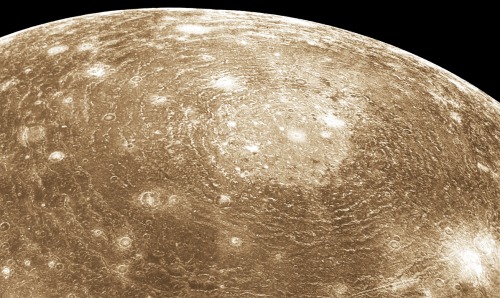
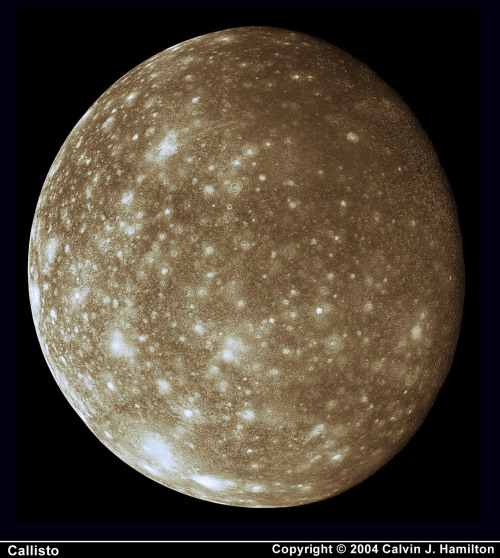
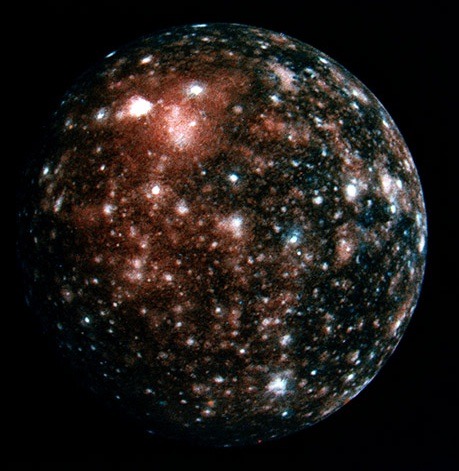

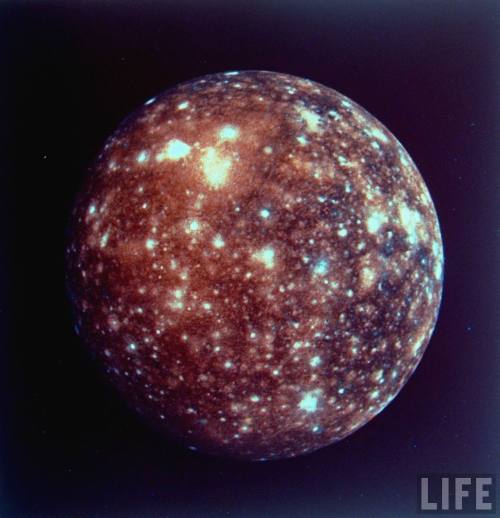
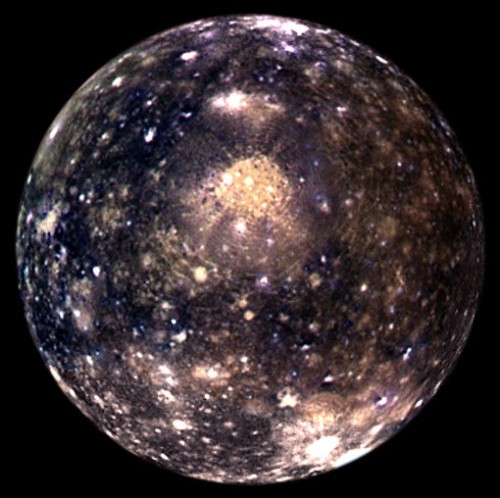

Jupiter’s moon, Callisto.

This new NASA/ESA Hubble Space Telescope image shows three of Jupiter’s largest moons parade (seems the perfect word for it) across the giant gas planet. This happens only once or twice every 10 years.
Here’s a more clear view to it:

7 Facts That Will Make You Feel Very Small
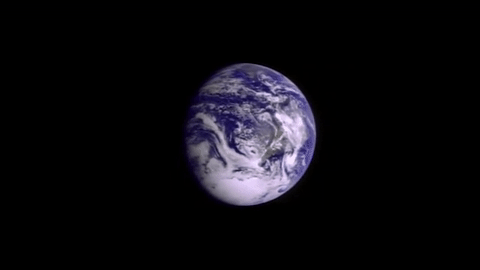
Earth, our home planet, is the fifth largest planet in our solar system and the only planet we know of where life exists. Even though Earth seems extremely large to us, it is actually a tiny spec in the vast expanse of the universe. Here are 7 space facts that will make you feel very small.

1. Our sun is one of at least 100 BILLION stars, just in the Milky Way. Scientists calculate that there are at least 100 billion galaxies in the observable universe, each one brimming with stars. There are more stars than grains of sand on all of Earth’s beaches combined.
In 1995, the first planet beyond our solar system was discovered. Now, thousands of planets orbiting sun-like stars have been discovered, also known as exoplanets.

2. The Milky Way is a huge city of stars, so big that even at the speed of light (which is fast!), it would take 100,000 years to travel across it.

3. Roughly 70% of the universe is made of dark energy. Dark matter makes up about 25%. The rest — everything on Earth, everything ever observed with all of our instruments, all normal matter adds up to less than 5% of the universe.

4. If the sun were as tall as a typical front door, Earth would be the size of a nickel.

5. The sun accounts for almost all of the mass in our solar system. Leaving .2% for all the planets and everything else.

6. Edwin Hubble discovered that the Universe is expanding and that at one point in time (14 billion years ago) the universe was all collected in just one point of space.

7. Four American spacecraft are headed out of our solar system to what scientists call interstellar space. Voyager 1 is the farthest out — more than 11 billion miles from our sun. It was the first manmade object to leave our solar system. Voyager 2, is speeding along at more than 39,000 mph, but will still take more than 296,000 years to pass Sirius, the brightest star in our night sky.
Feeling small yet? Here’s a tool that will show you just how tiny we are compared to everything else out there: http://imagine.gsfc.nasa.gov/features/cosmic/earth.html
Make sure to follow us on Tumblr for your regular dose of space: http://nasa.tumblr.com
-
 burningdarkfire reblogged this · 8 years ago
burningdarkfire reblogged this · 8 years ago -
 to-raretodie liked this · 9 years ago
to-raretodie liked this · 9 years ago -
 sumiki liked this · 9 years ago
sumiki liked this · 9 years ago -
 scionshtola reblogged this · 9 years ago
scionshtola reblogged this · 9 years ago -
 lapixlazuli reblogged this · 9 years ago
lapixlazuli reblogged this · 9 years ago -
 sosepurkki liked this · 9 years ago
sosepurkki liked this · 9 years ago -
 waltermittie reblogged this · 9 years ago
waltermittie reblogged this · 9 years ago -
 helloiamandrew reblogged this · 9 years ago
helloiamandrew reblogged this · 9 years ago -
 shkrhx liked this · 9 years ago
shkrhx liked this · 9 years ago -
 kurulapinta liked this · 9 years ago
kurulapinta liked this · 9 years ago -
 tenthcityyyy reblogged this · 9 years ago
tenthcityyyy reblogged this · 9 years ago -
 kmoneyaf liked this · 9 years ago
kmoneyaf liked this · 9 years ago -
 kmoneyaf reblogged this · 9 years ago
kmoneyaf reblogged this · 9 years ago -
 things-ilike-interesting reblogged this · 9 years ago
things-ilike-interesting reblogged this · 9 years ago -
 yokik reblogged this · 9 years ago
yokik reblogged this · 9 years ago -
 norevivalseason reblogged this · 9 years ago
norevivalseason reblogged this · 9 years ago -
 booooooooooooooooooook reblogged this · 9 years ago
booooooooooooooooooook reblogged this · 9 years ago -
 lightningbender reblogged this · 9 years ago
lightningbender reblogged this · 9 years ago -
 egg-queer reblogged this · 9 years ago
egg-queer reblogged this · 9 years ago -
 kissy0ur-knuckles reblogged this · 9 years ago
kissy0ur-knuckles reblogged this · 9 years ago -
 astriides reblogged this · 9 years ago
astriides reblogged this · 9 years ago -
 adampine reblogged this · 9 years ago
adampine reblogged this · 9 years ago -
 knjve reblogged this · 9 years ago
knjve reblogged this · 9 years ago -
 knopecomplimentss reblogged this · 9 years ago
knopecomplimentss reblogged this · 9 years ago -
 meknotmck liked this · 9 years ago
meknotmck liked this · 9 years ago -
 lesbianriverphoenix reblogged this · 9 years ago
lesbianriverphoenix reblogged this · 9 years ago -
 shadxwhunting reblogged this · 9 years ago
shadxwhunting reblogged this · 9 years ago -
 biblejeffss reblogged this · 9 years ago
biblejeffss reblogged this · 9 years ago -
 gxgglejuice liked this · 9 years ago
gxgglejuice liked this · 9 years ago -
 ionlysmokebingpot reblogged this · 9 years ago
ionlysmokebingpot reblogged this · 9 years ago -
 crystalclits333 reblogged this · 9 years ago
crystalclits333 reblogged this · 9 years ago -
 talidarling reblogged this · 9 years ago
talidarling reblogged this · 9 years ago -
 gothicgiraffes reblogged this · 9 years ago
gothicgiraffes reblogged this · 9 years ago -
 memories404 reblogged this · 9 years ago
memories404 reblogged this · 9 years ago -
 gaylethefish reblogged this · 9 years ago
gaylethefish reblogged this · 9 years ago -
 ssammys reblogged this · 9 years ago
ssammys reblogged this · 9 years ago -
 razuzu-is-a-garbage-bag liked this · 9 years ago
razuzu-is-a-garbage-bag liked this · 9 years ago -
 underestimating-rum reblogged this · 9 years ago
underestimating-rum reblogged this · 9 years ago -
 scienceismyaesthetic reblogged this · 9 years ago
scienceismyaesthetic reblogged this · 9 years ago -
 ambrhr-blog reblogged this · 9 years ago
ambrhr-blog reblogged this · 9 years ago -
 ryanlockyer reblogged this · 9 years ago
ryanlockyer reblogged this · 9 years ago -
 hunnybunchesofgoats reblogged this · 9 years ago
hunnybunchesofgoats reblogged this · 9 years ago -
 ifyourelisteningurtheresistance reblogged this · 9 years ago
ifyourelisteningurtheresistance reblogged this · 9 years ago
"Astronomy compels the soul to look upwards and leads us from this world to another." - Plato
147 posts